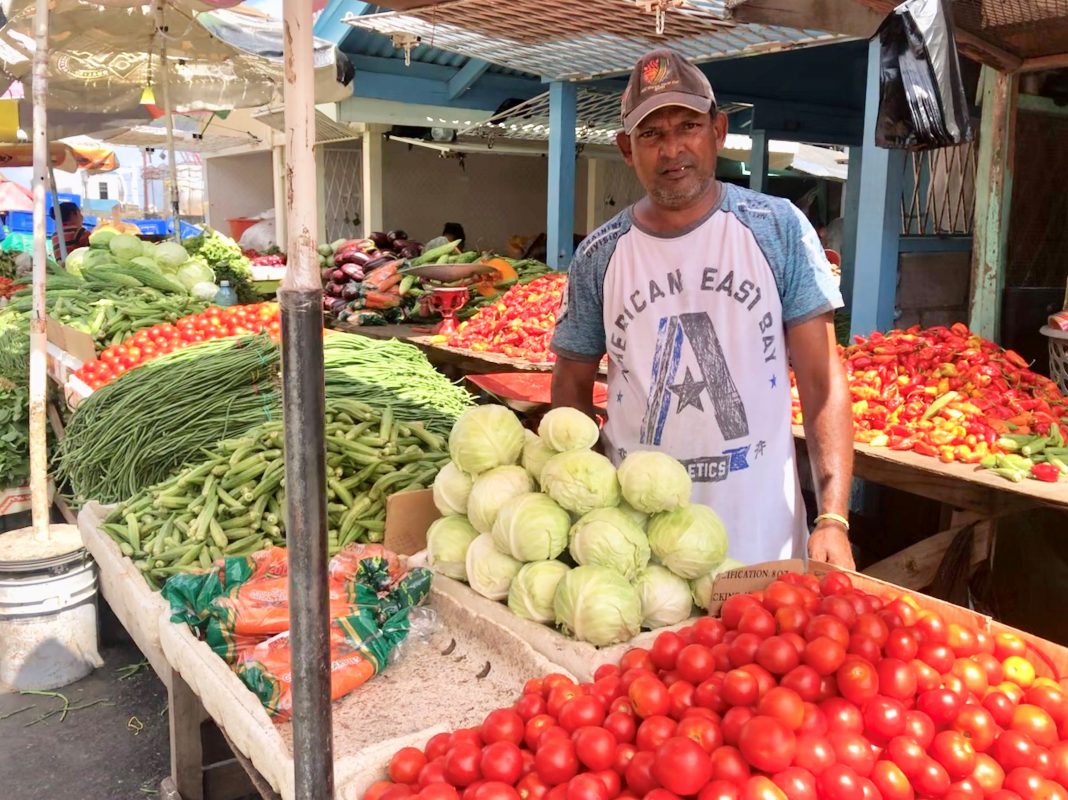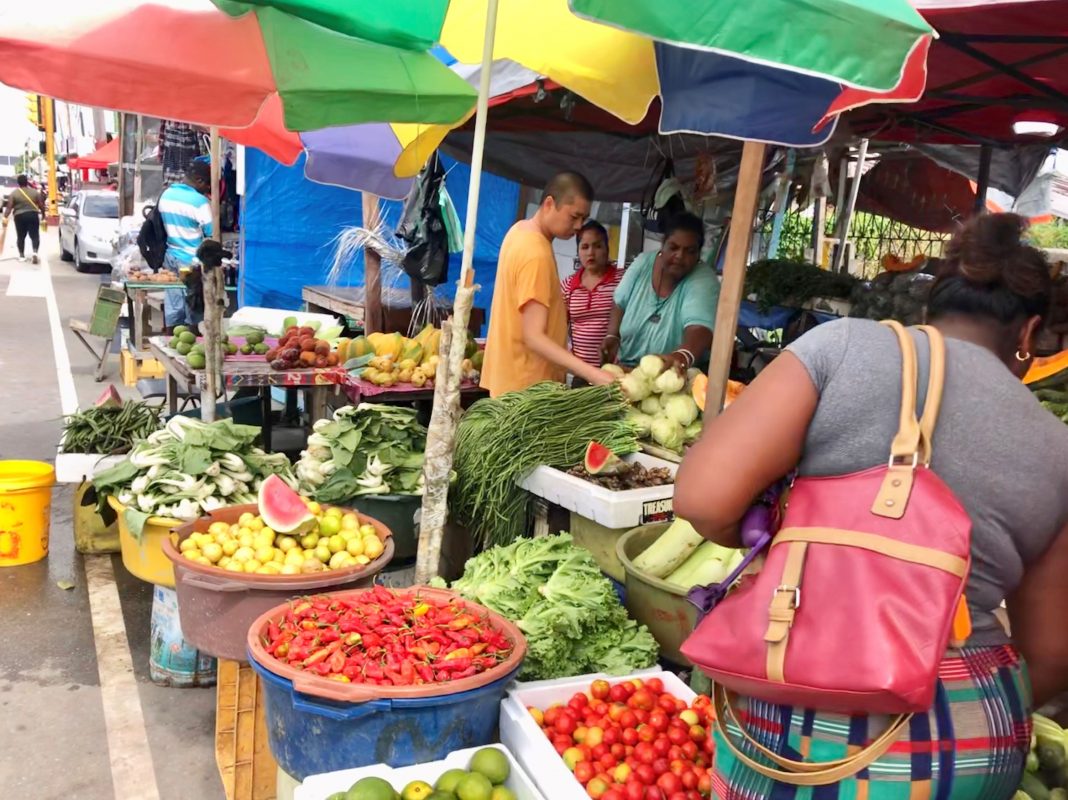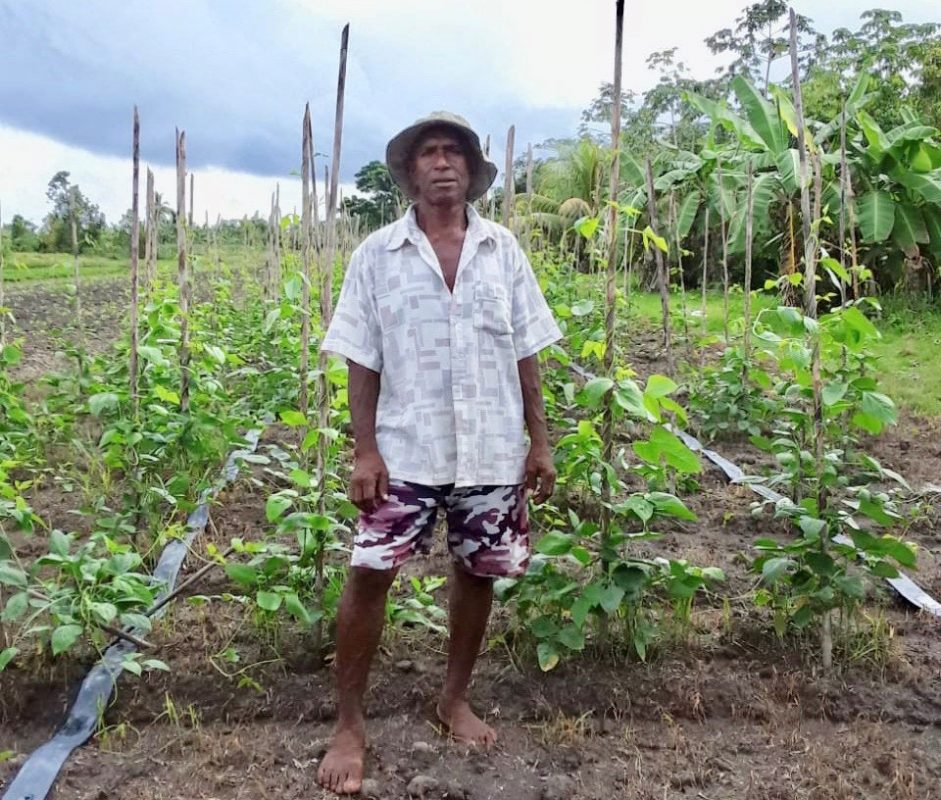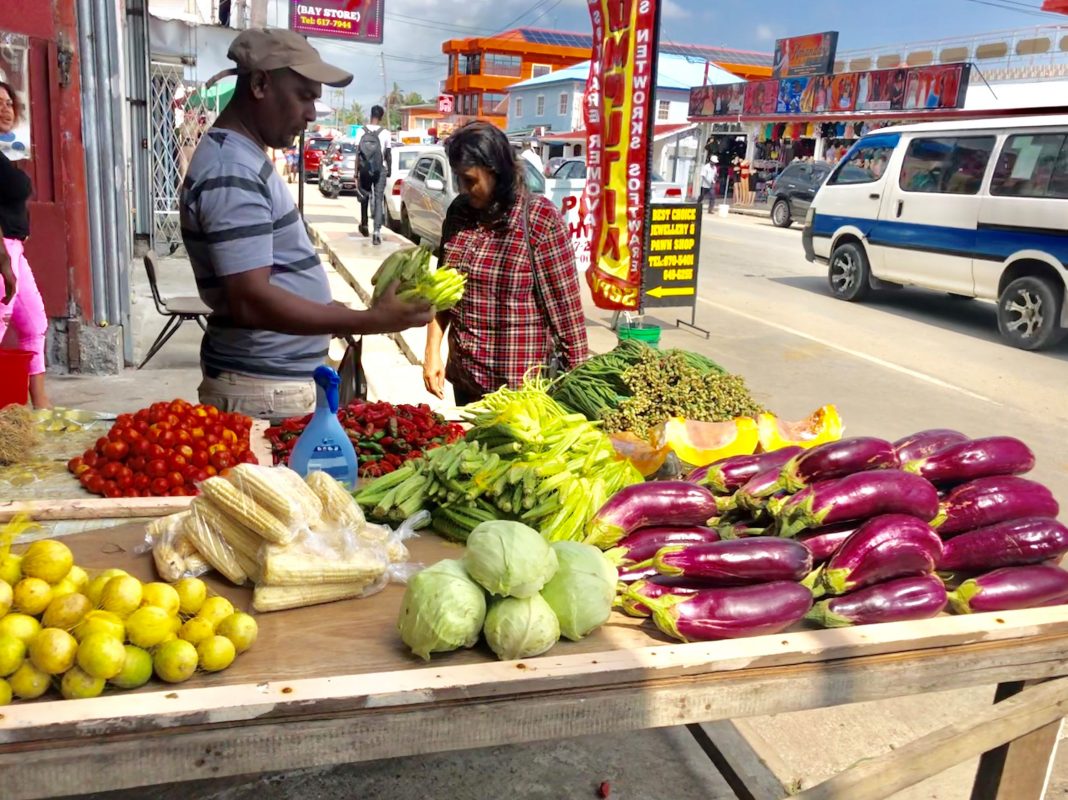As Agriculture Month is being observed, cash crop farmers have said that a change in the weather pattern which saw rainfall all through August has resulted in them cultivating late, harvesting a smaller quantity and selling at increased prices.
Vernon Sooklall, a farmer of Parika Backdam, told Stabroek News that they would usually be harvesting in August but this year the inclement weather prevented them from even getting to prepare the land on time.
Despite the vegetables selling for high prices, it still could not compensate him for losses.
He also incurred extra expenses to spray his plants for fungus and pests that came with the moisture from the rain.
This year, Agriculture Month is being observed under the theme: “Sustainable Agriculture for ensuring Food Safety and a Green Economy” and farmers said this is the perfect time for government to advise them on how to have better yields.
The farmers said that with the unpredictable weather they are also unsure about their livelihoods.
In an invited comment, Dr. Oudho Homenauth, Chief Executive Officer of the National Agricultural Research and Extension Institute (NAREI) told SN that the prolonged rainy season “would definitely have an impact (on the crops) because when it is too wet you won’t have good production, especially for some vegetables. There would be more loss when that kind of situation arises.”
He advised farmers to practice shaded cultivation, which is an effective way of minimizing losses. This method works best for short duration crops such as celery, pak choy and other leafy vegetables, as well as for tomatoes and peppers.
“That is the only way to minimize rainfall affecting the crops. Those who have done it would see the benefits and would not be affected,” Dr. Homenauth told this newspaper.
When asked, he said the weather pattern has to be as a result of climate change, noting that he “could not remember any other time when that happened.”
He said too that integrated farming, which refers to agricultural systems that integrate livestock and crop production, is also a good solution.
Another effective way of dealing with the situation, Dr. Homenauth said, is through intercropping, which involves two or more crops planted close by in an effort to secure higher yields.
For instance, he said where there are coconut trees, farmers can cultivate crops like passion fruit and ginger.
He said too that farmers who have fruit orchards and cash crop farms have been encouraged to plant other crops, such as leafy vegetables or vine crops like cucumbers – where space is available.
He has noticed the fungal problems with some of the crops, especially ochro but did not want to encourage the farmers to use too many chemicals. He is confident that the fungus will “definitely change now with the dry weather.”
He too said that the rain had caused farmers “to push back their crops… But everybody would have been back on stream now.”
Adverse
Many farmers were worried about whether the adverse weather conditions would have resulted in a short supply of planting materials, but Dr. Homenauth said this was not the case.
According to him, “Once the weather clears, farmers can easily access planting materials from the plant nurseries. We have in the Mahaica River and Hope Estates… Very few farmers would do seedlings on their own.”
A West Berbice farmer told SN that after the weather cleared, he was only able to start cultivating in the beginning of September and has now started to reap corilla. He planted a total of 90 18-month duration water coconut trees, along with cucumbers and the corilla plants.
He also planted papaya and had encountered a problem with them being `melted’. But he “tried a new drug and it helped.”
The farmer said that in the past he had a problem with salt water entering his farm through the drainage and irrigation canal. He and other farmers use the water for their plants. He hopes that the authorities take care of the problem to prevent it from occurring again.
High prices
This newspaper spoke to vendors at the Vreed-en-Hoop and Stabroek markets who said they were purchasing the produce from the farmers at high prices. They have also had to “sell more expensive, comparing to how cheap greens were before the rainy weather…”
Dr. Homenauth acknowledged: “When there’s a glut, prices go down and when they are in short supply prices tend to go up. As a result of the heavy rainfall, the quantity would not be there and those who have would capitalize. Marketable yields have definitely reduced.”
One woman said that “business is slow because of the price. People can’t afford to buy… We are facing hard time. And we have rent and bills to pay.”
She noticed that many housewives would buy smaller amounts.
Another vendor said that he is currently retailing ochro for $160 per pound after purchasing it for $120 per pound. Before the rainy season he resold for $50 per pound.
He purchased one bundle of bora for $600 as compared to the $300 he paid previously. He was “making $200 on it.” He purchased tomatoes for $360 per pound and was reselling for $400, sweet peppers for $460 and reselling for $500 while he sold cabbage for $300 after purchasing it for $260 per pound.
He too said that people were buying less because “money not circulating… times are hard.” As we spoke, he was picking out some rotten tomatoes to discard, while commenting; “Look all this spoil…”
In the afternoons he would drop the prices just to avoid wastage, even though he would “run at a loss.” He was happy though, that “at least people would buy a little more.”
At the Stabroek Market, Mohamed Hafiz was attending to a customer who commented that “greens really gone up.” He said that even though they would “cry out,” they would still purchase because “they still have to cook.”
He too would reduce the prices in the afternoon so that they would “sell out…”
This works well for customers who would stop to make purchases on their way to board the speedboats after work.
One woman who shops at the Leonora Market told this newspaper that although the prices have increased she “still have to buy and eat.”
She said that on Saturday morning the amount of boulanger she normally purchases for $200 was selling for $500. Because of her tight budget she could not spend more than $200 and had to settle for a much smaller parcel. She bought eddoes at an affordable price of two pounds for $100 and planned to mix it with the boulanger “to stretch it.” She said too that one squash which she normally purchases for about $80 each was selling at $300. She did not buy any squash this week.
Meanwhile, there has still been intermittent rainfall for this month and farmers are praying that it does not cause them to suffer more losses.










